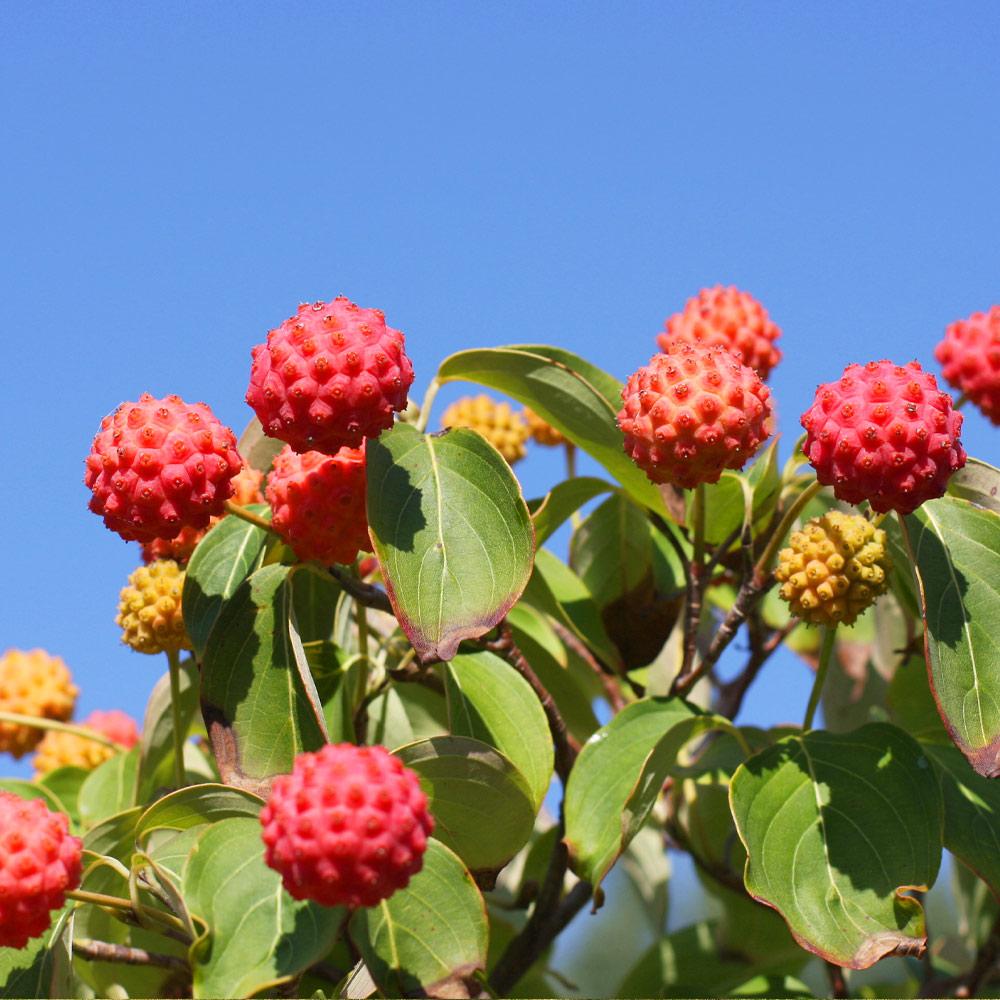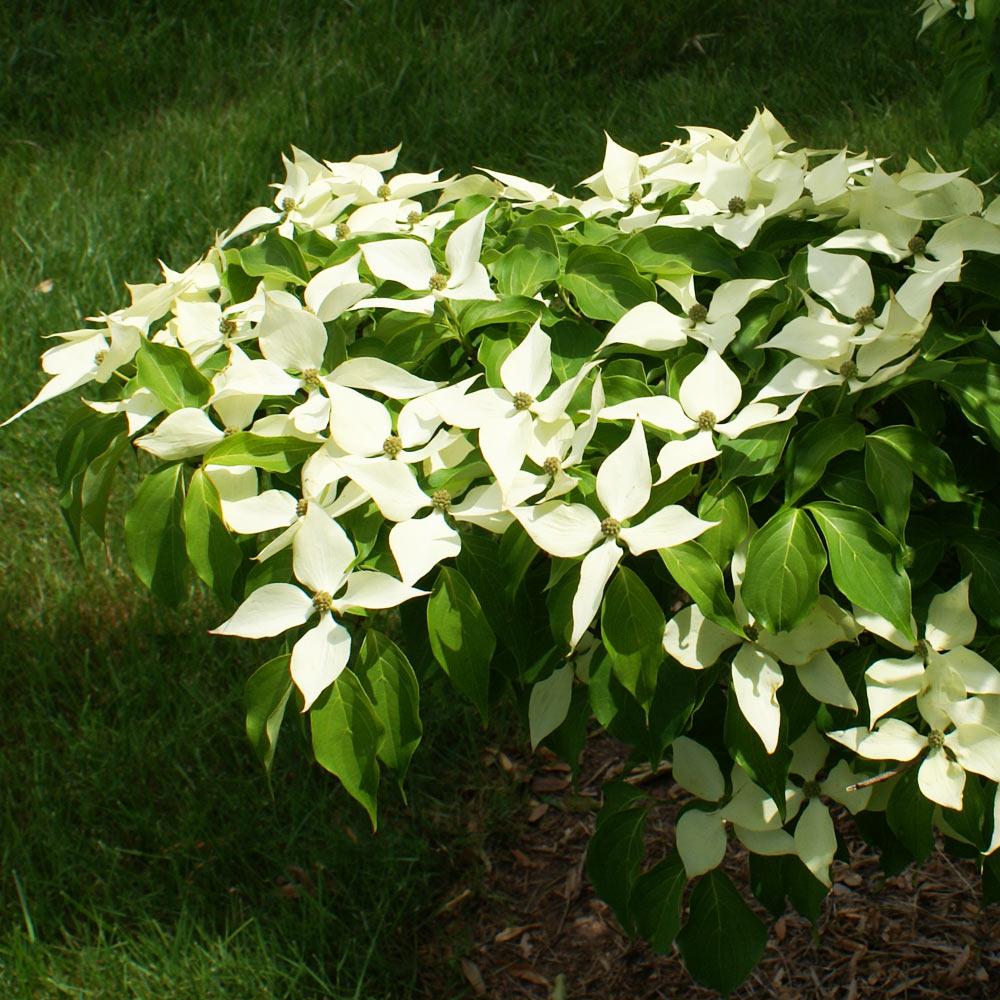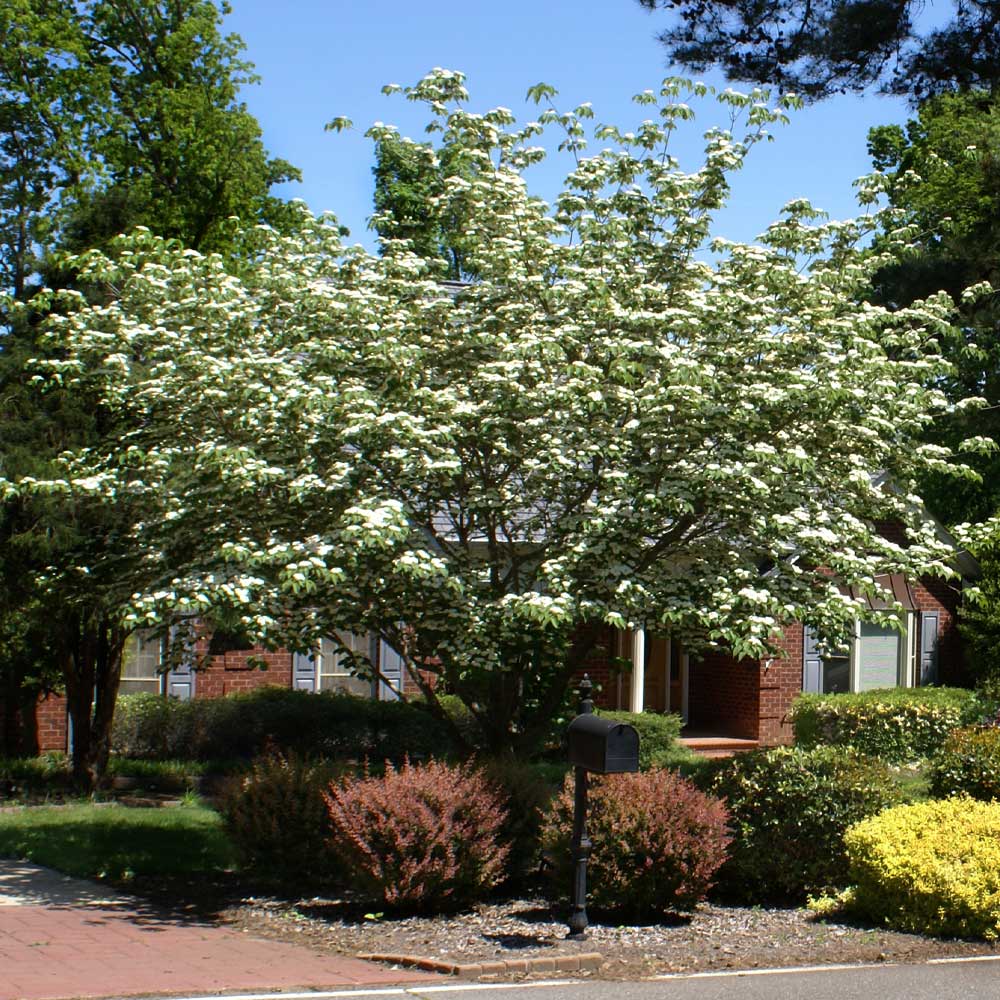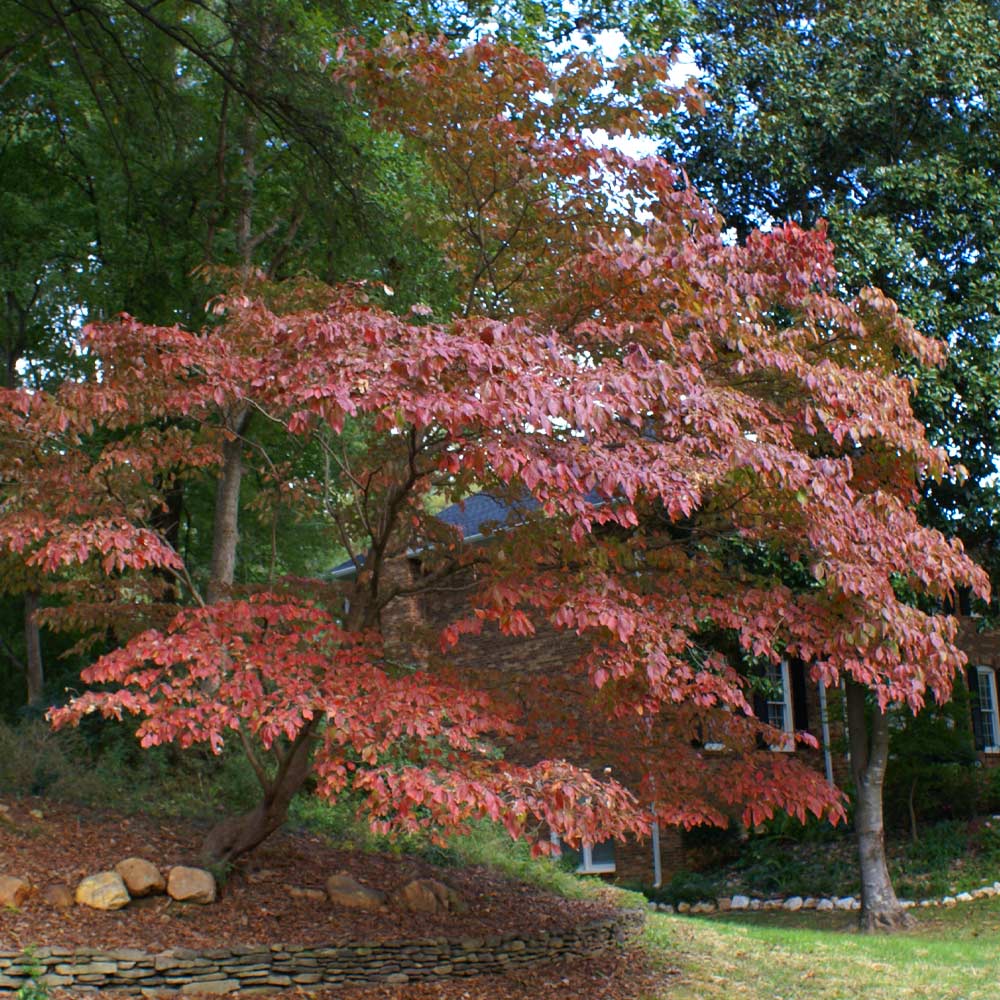Beautiful All Year Round
Highly disease resistant and trouble-free.
White springtime blooms and red berries last for months, followed by striking red and purple hues just in time for the autumn season.
Even in winter, the eye-catching bark and form of the Kousa bring a unique beauty to your landscape.
Distinctive vase shape makes this tree ideal for border and foundation planting, though it can stand alone as a showpiece tree with ease.
Attracts wildlife of all sorts, and provides a safe haven for birds in the winter time! Its small frame makes it ideal for tight areas, especially for under power lines!
The shallow root system of the Kousa makes it a perfect tree to plant near homes without fear of the roots damaging any structures.
The Kousa Dogwood flowers about a month later than the standard Dogwood. It has leaves when it flowers, which make an attractive backdrop. Kousa seems to do better at temperature extremes, both cold and hot.
Planting & Care
The White Kousa is known for its unique look, peeling bark, and epic white leaves that have the appearance of blooms. This tree is also commonly known as “Cornus kousa” one of the popular Japanese varieties. They are best known for their unique umbrella growth pattern and make wonderful shade trees for your landscape. These beautiful trees are best grown in USDA zones 5-8. They thrive best in both full and partial sunlight meaning they need at least 4 hours of direct unfiltered sunlight daily. White Kousa Dogwoods are considered to be slow to moderate growers with an average growth rate of 12-24 inches; depending on growing conditions. The blooming period for these trees is May through June.
Location: Choose a location that receives a minimum of 4 hours of unfiltered sunlight daily. If possible, place it in a location that will receive morning sun and afternoon shade. The location also needs to be in an area with rich, acidic, well draining moist soil. They are adaptable to most soil types but thrive best in sandy and clay based soil.
Planting Instructions:
1) Till, then dig a hole 2-3 times the size of the rootball of your tree.
2) Remove your tree from its container and loosen the soil around the root system.
3) Place your tree in the hole holding it straight, add a root stimulant and then back fill your hole.
4) Pack the soil firmly around the tree, tamping down with your hands to remove any air pockets.
5) Water the planting site and place a couple of layers of mulch around the tree to preserve soil moisture and keep competing growth at bay.
Watering: It is best to keep the soil moist around White Kousa Dogwoods. These are not considered to be drought tolerant trees so you’ll need to water daily the first week to keep the soil moist. After that you can water once or twice weekly during the first growing season.
Fertilization: It is best to test your soil prior to fertilizing your White Kousa Dogwood. This will help you know whether your tree can benefit from an all purpose fertilizer or if it needs a nutrient specific fertilizer.
If you already have nutrient rich soil, you can use a standard fertilizer like a 12-4-8 or a 16-4-8 formula. The best time to fertilize these trees is during the spring in April and May. Keep in mind that if you over-fertilize your tree, this could cause damage to the root system. It’s always best to follow the instructions on the package in regards to how much fertilizer to use.
Pruning: Trimming your White Kousa tree isn’t necessary. However, if you wish to show the unique bark and branching, you can prune off some of the lower branches to display more of the tree. This is especially helpful if you are using the tree as shade on your landscape.
Pest: Dogwood trees can have a couple of pest issues from time to time. The best defense is a healthy tree. Aphids have been known to feed on the plant tissue of these trees. You can treat these by spraying them off with a powerful stream of water and applying Neem Oil to your tree.
Borers are another insect that will feed on Dogwood trees. These pests tunnel through the tree’s trunk and twigs, feeding on the tree’s tissue. These are also easily treatable by removing any affected twigs and destroying them while the infestation is still active. You can also treat the base of the trunk with an insecticide in May as a preventative measure.








Comment